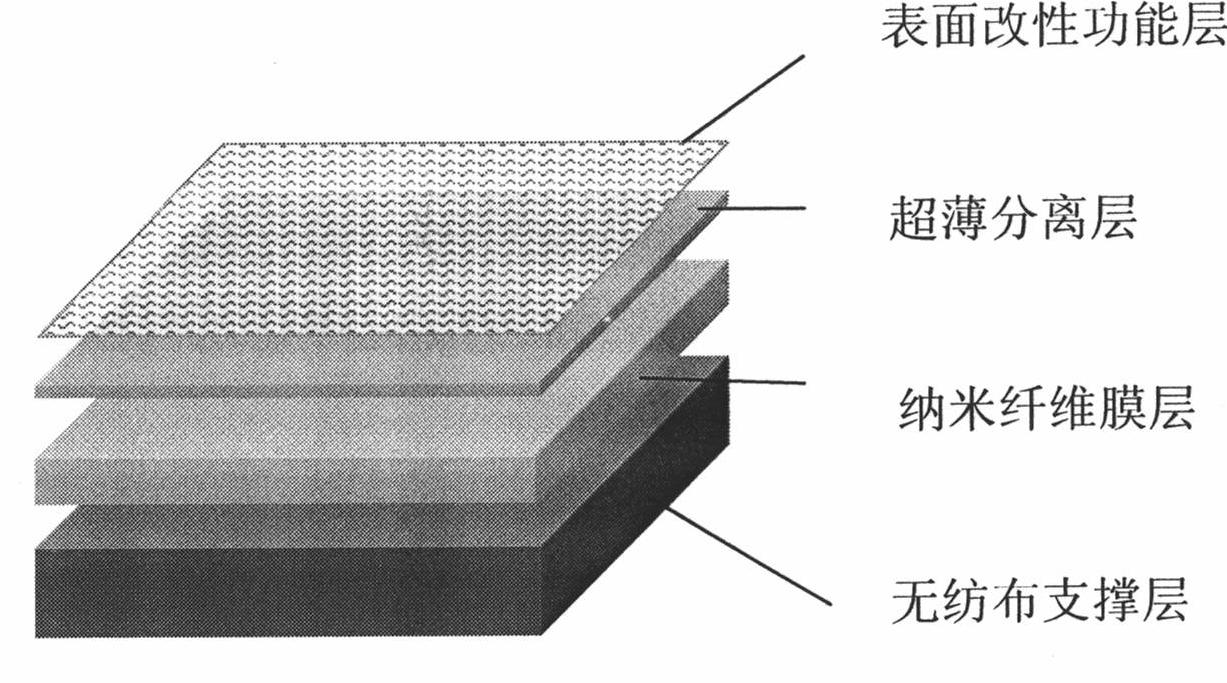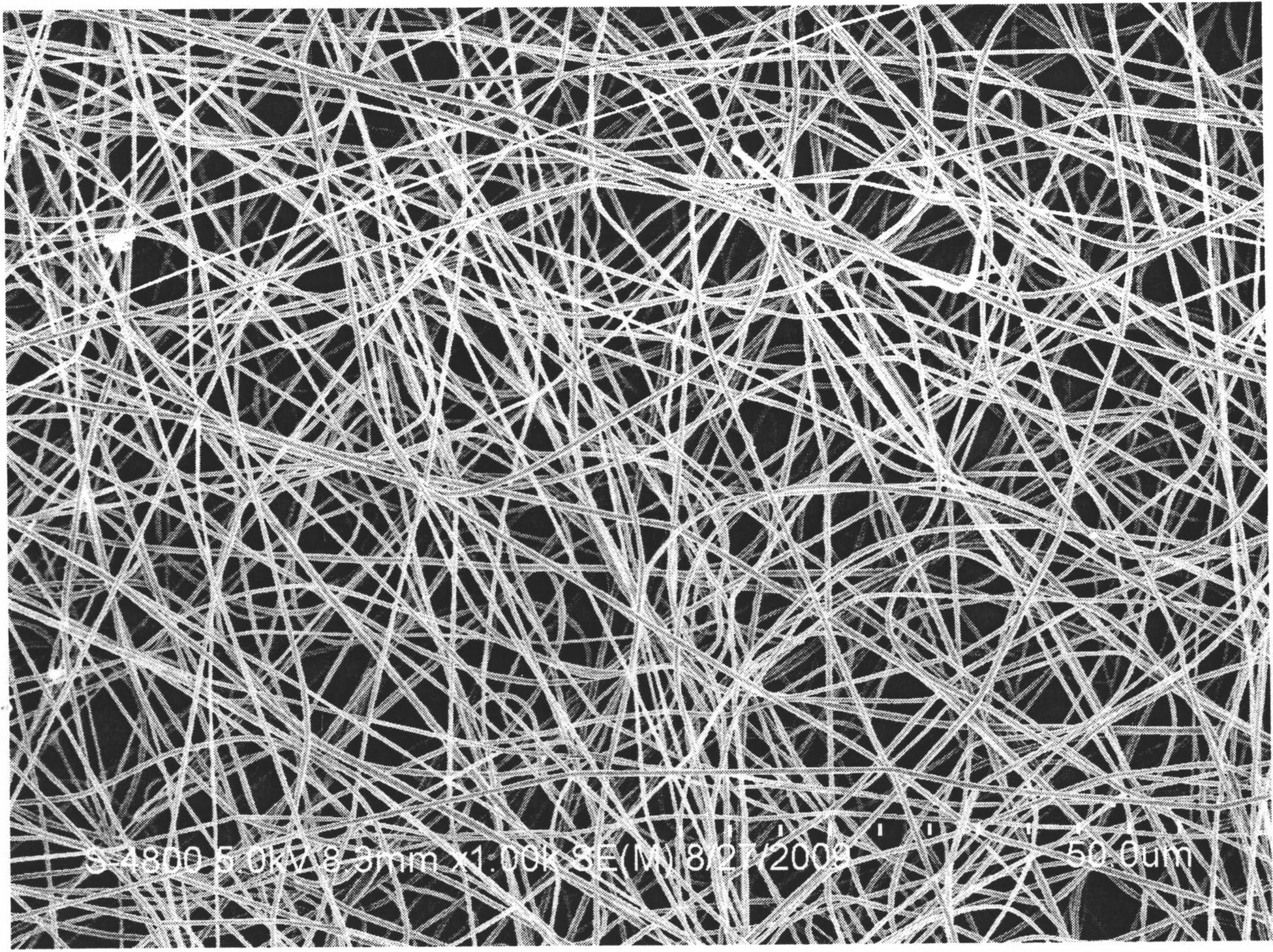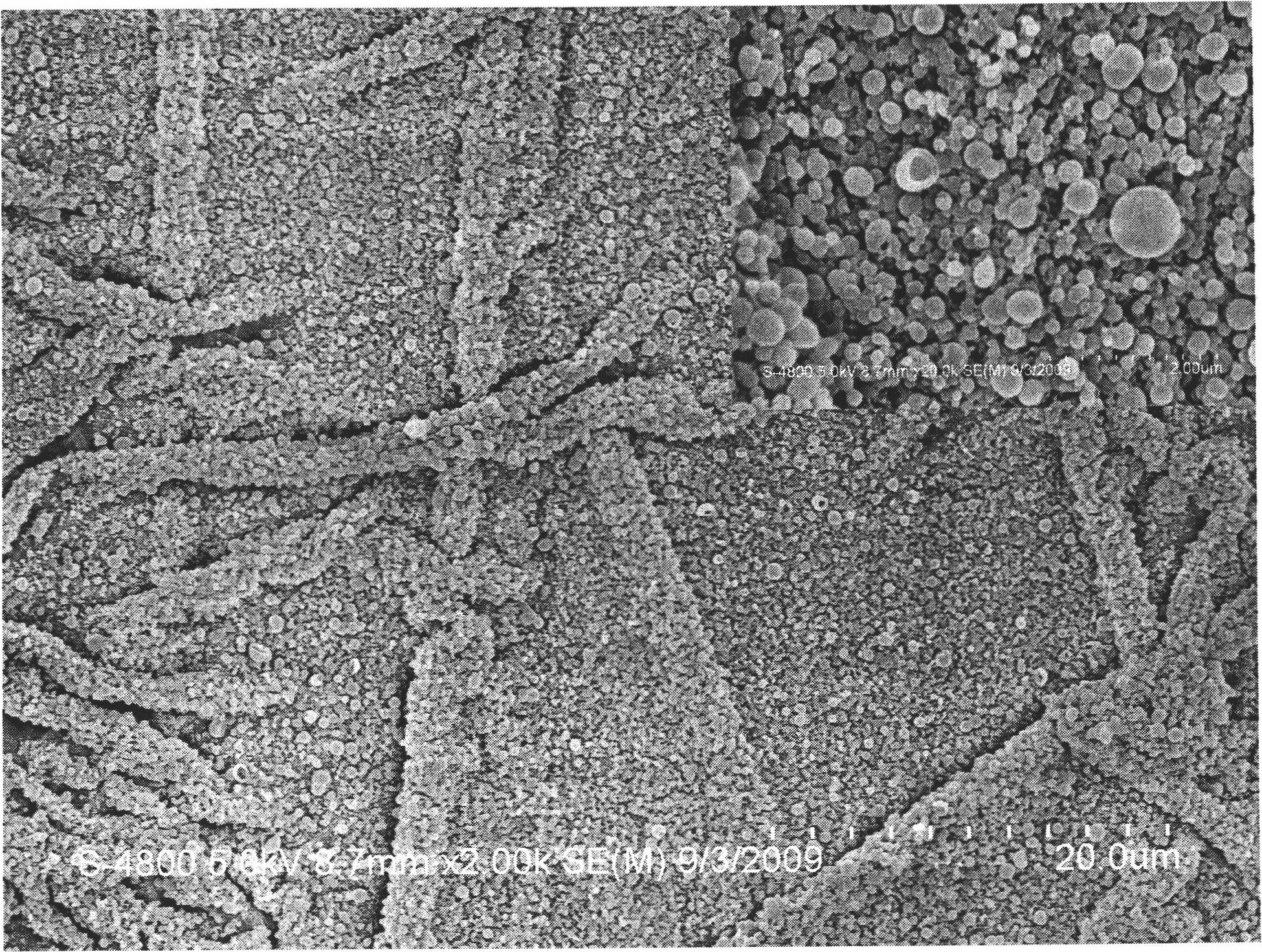Hyperfiltration membrane or nanofiltration membrane with multi-layered composite structure and preparation method thereof
A multi-layer composite and ultrafiltration membrane technology, applied in chemical instruments and methods, membrane technology, semi-permeable membrane separation, etc., can solve problems such as low porosity, not widely used in industrial production, maximum water flux limitation, etc., to achieve The effect of high water flux, stable chemical performance and high retention rate
- Summary
- Abstract
- Description
- Claims
- Application Information
AI Technical Summary
Problems solved by technology
Method used
Image
Examples
Embodiment 1
[0058] 1). Prepare the electrospinning solution. Dissolve the polymer (polyvinylidene fluoride) to be electrospun in N,N-dimethylformamide at 50°C, stir for 6 hours to make it evenly mixed, and obtain a polymer electrospinning solution, in which the polymer The volume concentration in the electrospinning solution was 15% (g / mL).
[0059] 2). Electrospinning. Put the electrospinning solution prepared in step 1) into the liquid storage device of the electrospinning equipment at a temperature of 50°C. The nozzles are connected, the spinneret is fixed, and a non-woven fabric is placed on a metal plate as a collector. Adjust the distance between the spinneret and the collecting plate to be 15cm; the ambient temperature for spinning is 50°C, including the temperature of the electrospinning solution in the liquid storage device and the temperature of the collecting plate are both 50°C, and the air flow rate in the environment is controlled at 0.5~0.8m 3 / h; turn on the high-volta...
Embodiment 2
[0067] 1). Prepare the electrospinning solution. Dissolve the polymer (polyvinylidene fluoride) to be electrospun in N,N-dimethylformamide at 50°C, stir for 6 hours to make it evenly mixed, and obtain a polymer electrospinning solution, in which the polymer The volume concentration in the electrospinning solution was 15% (g / mL).
[0068] 2). Electrospinning. Put the electrospinning solution prepared in step 1) into the liquid storage device of the electrospinning equipment at a temperature of 50°C. The nozzles are connected, the spinneret is fixed, and a non-woven fabric is placed on a metal plate as a collector. Adjust the distance between the spinneret and the collecting plate to be 15cm; the ambient temperature for spinning is 50°C, including the temperature of the electrospinning solution in the liquid storage device and the temperature of the collecting plate are both 50°C, and the air flow rate in the environment is controlled at 0.5~0.8m 3 / h; turn on the high-volta...
Embodiment 3
[0076] 1). Prepare the electrospinning solution. Dissolve the polymer (polyvinylidene fluoride) to be electrospun in N,N-dimethylformamide at 50°C, stir for 6 hours to make it evenly mixed, and obtain a polymer electrospinning solution, in which the polymer The volume concentration in the electrospinning solution was 15% (g / mL).
[0077] 2). Electrospinning. Put the electrospinning solution prepared in step 1) into the liquid storage device of the electrospinning equipment at a temperature of 50°C. The nozzles are connected, the spinneret is fixed, and a non-woven fabric is placed on a metal plate as a collector. Adjust the distance between the spinneret and the collecting plate to be 15cm; the ambient temperature for spinning is 50°C, including the temperature of the electrospinning solution in the liquid storage device and the temperature of the collecting plate are both 50°C, and the air flow rate in the environment is controlled at 0.5~0.8m 3 / h; turn on the high-volta...
PUM
 Login to View More
Login to View More Abstract
Description
Claims
Application Information
 Login to View More
Login to View More - R&D
- Intellectual Property
- Life Sciences
- Materials
- Tech Scout
- Unparalleled Data Quality
- Higher Quality Content
- 60% Fewer Hallucinations
Browse by: Latest US Patents, China's latest patents, Technical Efficacy Thesaurus, Application Domain, Technology Topic, Popular Technical Reports.
© 2025 PatSnap. All rights reserved.Legal|Privacy policy|Modern Slavery Act Transparency Statement|Sitemap|About US| Contact US: help@patsnap.com



